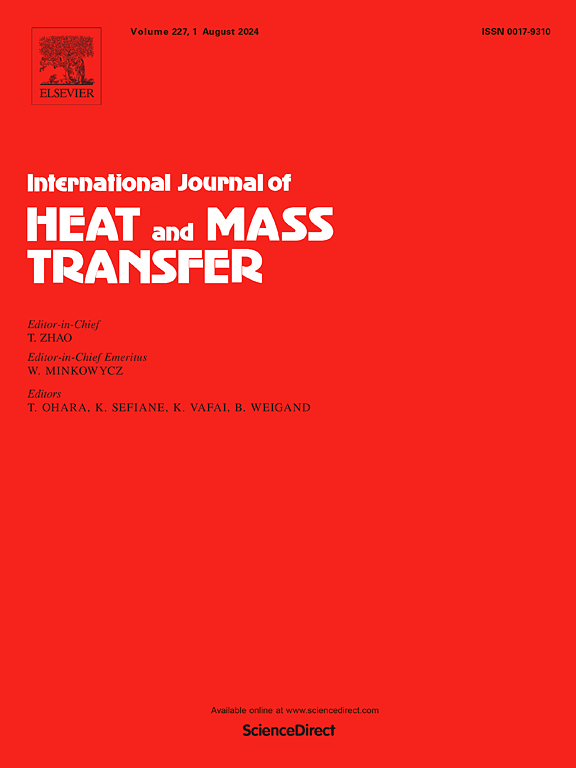Experimental study on flow boiling in microchannel evaporators with top gap structures
IF 5
2区 工程技术
Q1 ENGINEERING, MECHANICAL
International Journal of Heat and Mass Transfer
Pub Date : 2025-01-16
DOI:10.1016/j.ijheatmasstransfer.2025.126710
引用次数: 0
Abstract
The efficient cooling of high-power electronic equipment requires developing a simple and effective method for enhancing boiling heat transfer. This study utilized R245fa as a refrigerant in a closed pump-driven two-phase system to enhance boiling heat transfer performance. The effects of the boiling curves, overall heat transfer performance, radial local heat transfer coefficients, and along-length local heat transfer coefficients were analyzed under five different mass fluxes and four top gap height structures. The results indicate that a top gap height of 0.9 mm leads to a higher critical heat flux compared to a structure without a top gap. For a given mass flux, the overall heat transfer coefficient peaks at a top gap height of 0.9 mm. The difference in radial local heat transfer coefficient (Δ) consistently exceeds zero across different vapor qualities and mass flux conditions. As the vapor quality increased, the overall trend of the along-length heat transfer coefficient showed a significant increase at the = 0 position. Among the top gap structures, the 0.9-mm top gap height exhibits the highest and most uniform along-length heat transfer coefficient. The average local heat transfer coefficients for the 0.9-mm top gap were 1.17-, 1.20-, 1.21-, 1.11-, and 1.09 times higher than those of a gapless structure as the mass flux increased from 89 to 535 kg/m²/s. This study provides deeper insight into how the top gap height enhances the fluid redistribution and rewetting mechanisms in flow boiling within microchannels.
求助全文
约1分钟内获得全文
求助全文
来源期刊
CiteScore
10.30
自引率
13.50%
发文量
1319
审稿时长
41 days
期刊介绍:
International Journal of Heat and Mass Transfer is the vehicle for the exchange of basic ideas in heat and mass transfer between research workers and engineers throughout the world. It focuses on both analytical and experimental research, with an emphasis on contributions which increase the basic understanding of transfer processes and their application to engineering problems.
Topics include:
-New methods of measuring and/or correlating transport-property data
-Energy engineering
-Environmental applications of heat and/or mass transfer

 求助内容:
求助内容: 应助结果提醒方式:
应助结果提醒方式:


